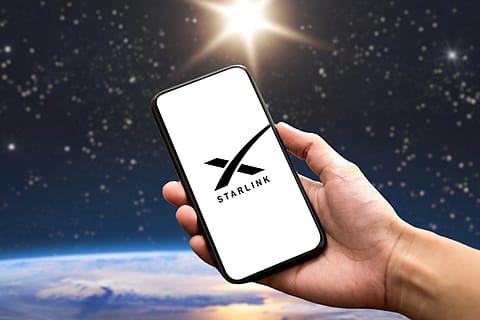Airtel, Jio’s Starlink deal with Elon Musk: Why tariffs could make or break Starlink’s success in India
While that means India is close to offering satellite communication services in and around the country, it could still take time to happen.

In a matter of a few hours on Tuesday, first Bharti Airtel and then Reliance Jio announced tie-ups with Elon Musk’s SpaceX to offer Starlink’s broadband internet services in India. Interestingly, this happened at a time when US President Donald Trump has been pushing India to lower import duties on American products and Elon Musk is looking to start selling Tesla cars here.
While that means India is close to offering satellite communication services in and around the country, it could still take time to happen. Much depends on Starlink getting regulatory approvals from the Union government. The Airtel press release categorically states “This is the first agreement to be signed in India, which is subject to SpaceX receiving its own authorisation to sell Starlink in India.”
Starlink offers satcom services using a constellation of over 7,000 low earth orbit (LEO) satellites that offer low latency (time delay between a request and response measured in milliseconds) globally. These satellites orbit the earth at 550 kilometres as opposed to 36,000 kilometres for geostationary satellites.
What does this announcement mean to Indian mobile consumers, the telcos, the government and Starlink?
Today, India has 1.15 billion mobile subscribers (the most anywhere after China), with 898.5 million of them having mobile broadband services. These subscribers pay among the lowest telecom tariffs globally with an average revenue per user (ARPU) of ₹172.57 per month. According to the Ericsson Mobility Report, India already has the highest average monthly data usage per smartphone at 32GB. This is expected to hit 66GB by 2030 growing at a CAGR of 13%. Monthly usage per subscriber is also high at 974 minutes.
So, what Starlink will offer is nothing unique to the $48 billion Indian telecom market.
It will be able to offer services in areas where network coverage is still inadequate. However, that is not going to be cheap. To get Starlink services in a remote area, the user will need customer premise equipment (CPE) that currently comes in the region of $300 (₹25,500) for getting internet access. As volumes rise, the prices will fall, but is still quite expensive in a country where people think many times before investing in a ₹5,000 smartphone.
Recommended Stories
Apart from a higher acquisition cost, the service will also be costlier, because Starlink will have to pay an 8% licence fee plus a yet to be announced spectrum usage charge (SUC). In case of auctioned spectrum, the SUC is 0% now, but the government has specified that satcom spectrum will be allocated administratively following global practices. In addition, both Airtel and Jio will need to pay licence fee and SUC on their earnings from Starlink.
So, as far as consumers (be it residential or business) are concerned, they will need to pay more, both upfront to get the service commissioned and on a monthly basis for using services. Unless it is a key business in an unconnected area, such as a new leisure and tourist spots somewhere high up in the Himalayas for example, there is no real tangible gain for consumers.
Again, what Starlink has done by tying up with both Jio and Airtel is nothing unique. Across the world, it is known to tie up with major mobile service in key countries to offer satcom services.
Both Airtel and Jio will sell Starlink hardware through their stores, offering it as yet another means for the consumer to stay connected. Under the agreement, Starlink has access to the retail outlets of Jio and Airtel. The telcos will help Starlink set up services for customers via various devices such as the Starlink dish, the router, Starlink cable, and the AC cable. Airtel plans to use the technology to expand services in schools and remote healthcare locations.
(INR CR)
Also, what the alliance will offer is wireless broadband similar to what operators are already offering via their 4G and 5G services today.
The rollout of Starlink services finally depends on SpaceX obtaining regulatory approvals from the Indian government, including licenses from IN-SPACe and the Department of Telecommunications (DoT). Currently, Starlink has not yet secured these approvals.
It’s still early days for satcom services in India, unless Starlink gets the requisite approvals quickly. Till then it is a case of wait and watch.